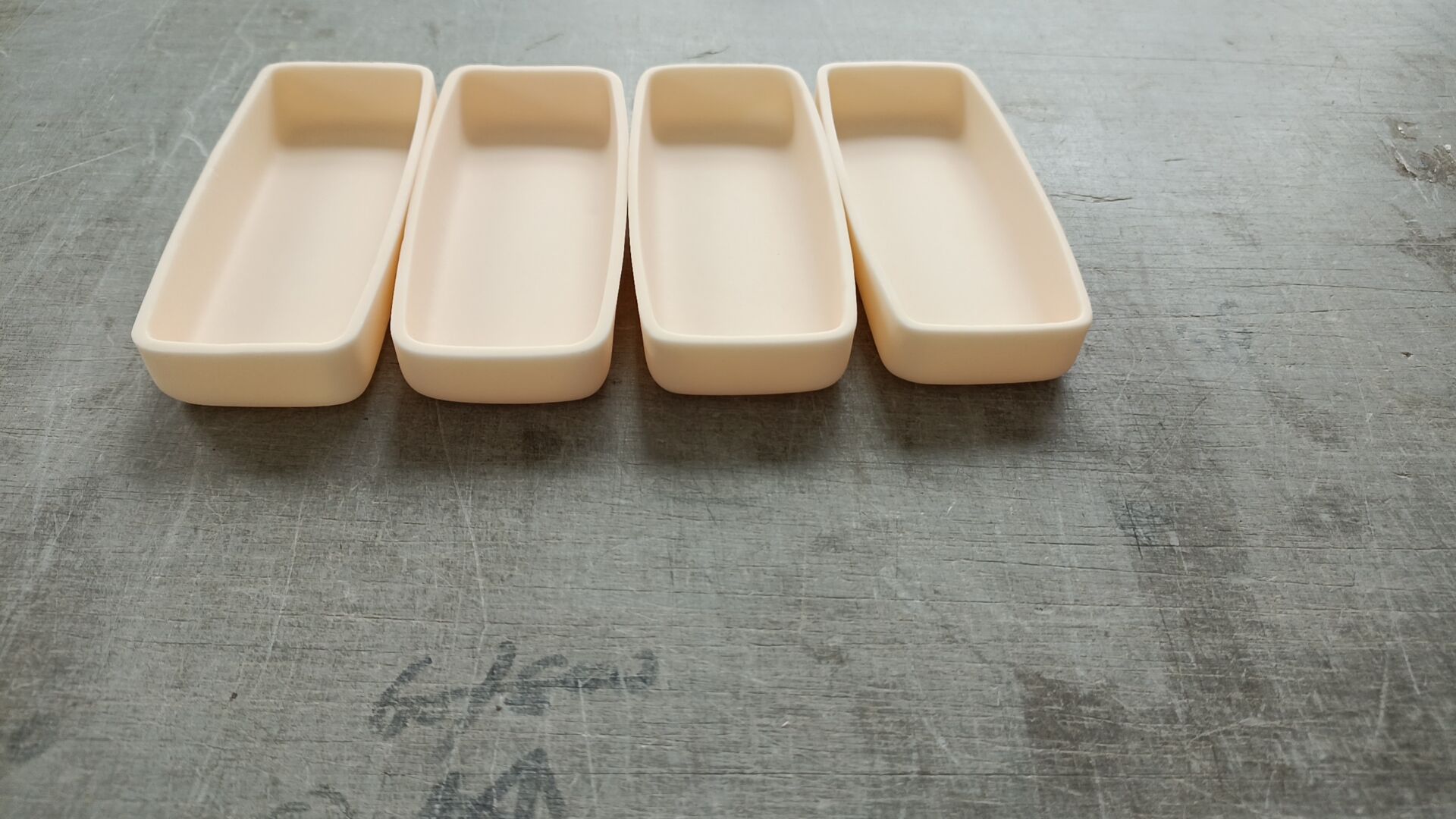Application of alumina ceramic boats in high-temperature solid-phase synthesis experiment

1、 Experimental background
In the field of materials science, high-temperature solid-phase synthesis is an important method for preparing various new materials. A certain university's materials laboratory is dedicated to developing new functional ceramic materials. In a high-temperature solid-phase synthesis experiment, a container that can withstand high temperatures, has stable chemical properties, and does not interfere with the reaction is needed to ensure the accuracy and reproducibility of the experiment. After evaluating various materials, the alumina ceramic boats was ultimately chosen as the experimental container.
2、 Experimental requirement analysis
1. High temperature resistance: The experiment needs to be conducted at a high temperature of 1500 ℃ for up to 10 hours. Therefore, it is required that the experimental container must have excellent high temperature resistance, without softening, deformation, or melting in such a high temperature environment.
2. Chemical stability: Various chemical substances are involved in the experimental process, such as metal oxides, carbonates, etc., which may undergo complex chemical reactions at high temperatures. The experimental container cannot undergo chemical reactions with these reactants to avoid affecting the experimental results, which places extremely high demands on the chemical stability of the container.
3. Low impurity introduction: In order to ensure the purity of the synthetic material, the experimental container should not release any impurities at high temperatures to avoid negative effects on the performance of the synthetic material.
3、 Characteristics and advantages of alumina ceramic boats
1. High melting point and excellent high temperature resistance: Alumina ceramics have a melting point of up to 2050 ℃, far exceeding the experimental requirement of 1500 ℃. In this experiment, the alumina ceramic boats maintained its complete shape and structure at a high temperature of 1500 ℃ for 10 hours without any signs of softening or deformation, fully meeting the strict requirements for high temperature resistance in the experiment.
2. Excellent chemical stability: Alumina ceramics have extremely stable chemical properties and hardly react with most chemicals. In this high-temperature solid-phase synthesis experiment, the alumina ceramic boats exhibited excellent chemical stability in the face of various metal oxides and carbonates, and did not undergo any chemical reactions with any reactants, effectively ensuring the accuracy and reliability of the experimental results.
3. Low impurity content and low volatility characteristics: Alumina ceramics undergo strict quality control during production, resulting in extremely low impurity content. Under high temperature conditions, its low volatility ensures that no impurities are introduced into the experimental system, providing strong support for the synthesis of high-purity functional ceramic materials.
4、 Experimental process
1. Preparation stage: Weigh appropriate amounts of metal oxides and carbonates and other reactants according to precise stoichiometric ratios, and mix thoroughly and evenly. Subsequently, carefully load the mixed reactants into an alumina ceramic boat.
2. High temperature reaction stage: Place the alumina ceramic boats containing reactants into a high-temperature furnace, slowly raise the temperature to 1500 ℃ at a specific heating rate, and maintain a constant temperature at this temperature for 10 hours to allow the reactants to fully undergo solid-phase reaction. During the entire heating and constant temperature process, closely monitor the temperature changes inside the high-temperature furnace to ensure the accuracy and stability of the temperature.
3. Cooling stage: After the reaction is complete, turn off the power of the high-temperature furnace and let the furnace cool naturally to room temperature. During the cooling process, the alumina ceramic boats remained stable without any cracking or damage caused by temperature changes.
5、 Experimental results
1. High product quality: The synthesized product was characterized by various analytical methods such as X-ray diffraction (XRD) and scanning electron microscopy (SEM). The results showed that the target functional ceramic material was successfully synthesized using an alumina ceramic boats as the experimental container. The product had high purity and good crystallinity, and no impurity peaks introduced due to container contamination were detected. The microstructure of the material was uniform and met the expected design requirements.
2. Good experimental repeatability: In subsequent repeated experiments, stable and consistent experimental results were obtained using alumina ceramic boats, fully verifying their reliability and repeatability in high-temperature solid-phase synthesis experiments.
6、 Conclusion
In this high-temperature solid-phase synthesis experiment, the alumina ceramic boats successfully met the strict requirements for high temperature, chemical stability, and low pollution in the experiment due to its significant advantages such as high melting point, excellent chemical stability, and low impurity introduction, providing a key guarantee for the synthesis of high-quality new functional ceramic materials. The experimental results indicate that alumina ceramic boats are an ideal choice for high-temperature experiments such as solid-state synthesis in laboratories, which can effectively improve the accuracy, reliability, and repeatability of experiments, providing strong support for research work in the field of materials science.

